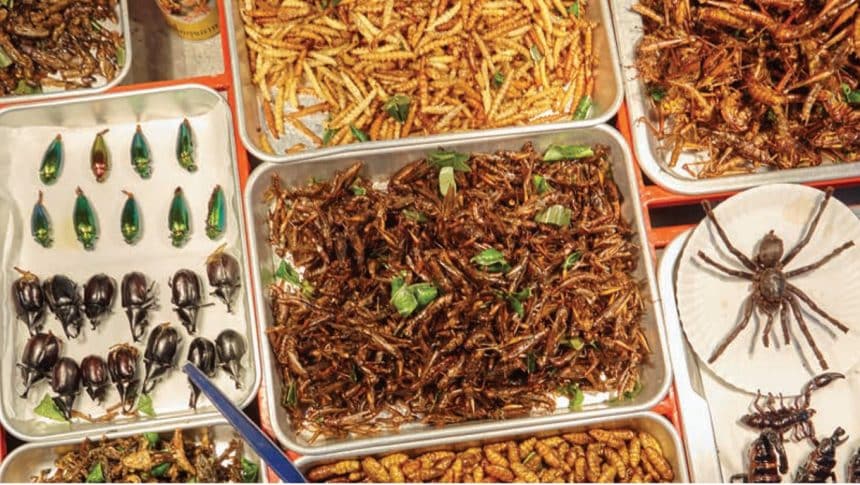The Singapore Food Agency (SFA) certified 16 bug species for human eating, including house crickets, African migratory locusts, white grubs, bigger wax moths, and giant rhino beetle grubs. Honeybee fried, silkworm sushi, and crispy chili bugs may all be on the menu the next time you visit a Singapore restaurant. On July 8, the Singapore Food Agency (SFA) certified 16 bug species for human eating.
Every country and its cuisine have something special to offer. Which is what distinguishes them and creates a legacy that food enthusiasts cherish. Eating insects is one example of a distinctive characteristic. Almost every country recognizes the advantages of eating insects.
16 insects approved for human consumption
House crickets are light brown with three dark bands on their heads. They have long antennae, powerful hind legs for jumping, and wings that are flat on the back. Four crickets, two grasshoppers, a locust, and a honeybee have reached adulthood. Silkworm moths and silkworms (different stages of the same species) can both be consumed.
The African migratory locust (Locusta migratoria migratorioides) is a subspecies of the migratory locust. It is notable for its ability to assemble enormous swarms that can inflict extensive agricultural damage. These locusts are usually green or brown, with a unique, strong body and lengthy wings. Nymphs (hoppers) are wingless and undergo multiple molts before becoming adults.
The huge rhino beetle grub is the larval stage of a variety of rhinoceros beetle species in the Scarabaeidae family. Strict safety restrictions will apply to handling these insects in kitchens and pre-packaged sectors, including adequate labeling of their origins.
Insect-eating is not a novel idea
The SFA has also permitted the import of insect goods such as insect oil and uncooked pasta with insects as a component. Chocolate and other confectionary containing no more than 20% insect, salted, brined, smoked, and dried bee larvae, marinated beetle grub, and silkworm pupa. Several communities in various nations, including India, use insects as food. In 2013, the UN Food and Agriculture Organization said that two billion people in Asia, Africa, and Latin America consumed insects.



